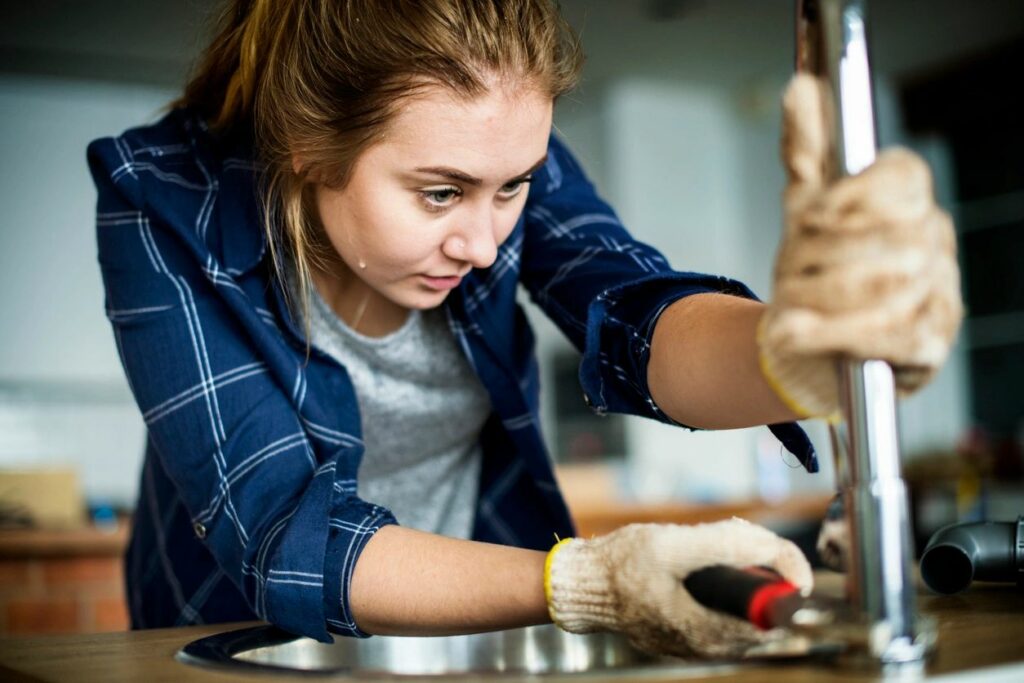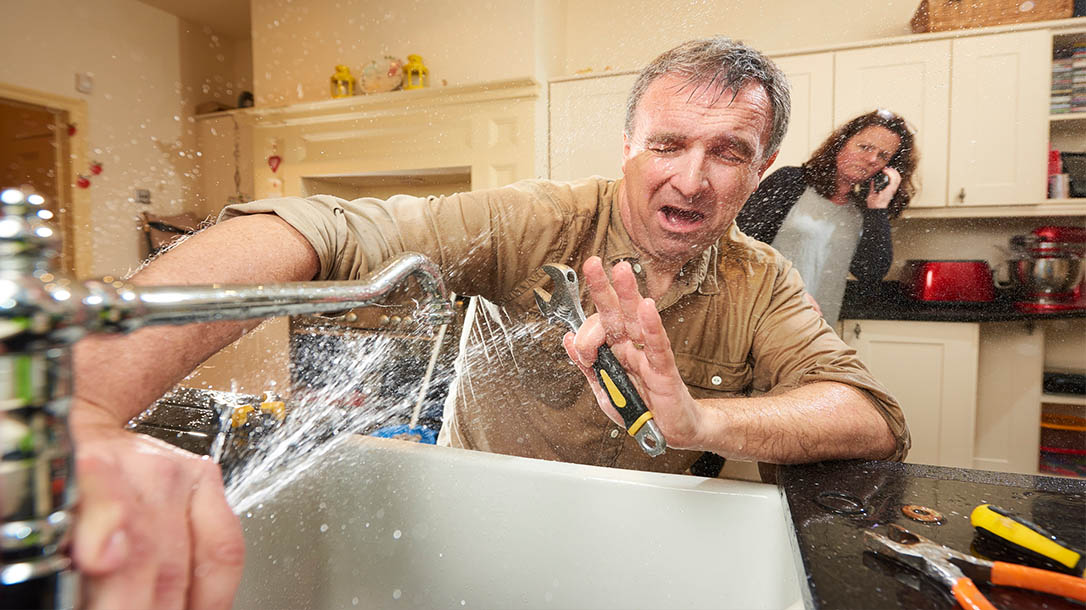Discovering the Importance of Resolving a Malfunctioning Faucet
Discovering the Importance of Resolving a Malfunctioning Faucet
Blog Article
What're your thoughts and feelings about Water Dripping from Faucet: Why and How to Fix?

Leaking faucets could seem like a small trouble, but their effect goes beyond simply the aggravation of the sound. From wasting water to sustaining unnecessary economic expenses and wellness threats, overlooking a dripping faucet can result in various effects. In this short article, we'll delve into why it's crucial to resolve this typical home problem without delay and properly.
Waste of Water
Ecological Impact
Dripping faucets add significantly to water wastefulness. According to the Epa (EPA), a single tap dripping at one drip per secondly can throw away more than 3,000 gallons of water per year. This not just pressures water sources yet likewise impacts ecosystems and wildlife depending on them.
Step-by-Step Overview to Fixing a Dripping Faucet
Devices Required
Before attempting to deal with a trickling tap, gather the required devices, consisting of an adjustable wrench, screwdrivers, replacement parts (such as washers or cartridges), and plumber's tape.
Typical Faucet Issues and Their Solutions
Determine the sort of faucet and the specific issue creating the drip. Typical problems consist of worn-out washers, corroded valve seats, or malfunctioning O-rings. Describe maker directions or online tutorials for step-by-step advice on repairs.
Financial Expenses
Enhanced Water Bills
Beyond the environmental effect, leaking taps can pump up water expenses significantly. The accumulated wastefulness gradually converts into higher energy expenditures, which can have been avoided with timely repair work.
Potential Building Damage
Moreover, long term dripping can cause damage to fixtures and surfaces bordering the tap. Water accumulation can cause discoloration, corrosion, and also structural problems if left neglected, resulting in additional repair expenses.
Wellness Concerns
Mold And Mildew and Mold Development
The constant presence of moisture from a dripping tap develops an ideal environment for mold and mildew and mildew growth. These fungis not only compromise interior air quality yet additionally posture wellness dangers, specifically for people with respiratory conditions or allergic reactions.
Waterborne Conditions
Stationary water in dripping taps can become a breeding ground for microorganisms and other pathogens, raising the danger of waterborne diseases. Pollutants such as Legionella germs grow in stationary water, potentially leading to significant health problems when ingested or breathed in.
Do it yourself vs. Expert Repair service
Advantages and disadvantages of Do It Yourself Repair Service
While some may attempt to take care of a leaking faucet themselves, do it yourself repairs include their own set of challenges. Without correct expertise and tools, do it yourself efforts can aggravate the concern or lead to insufficient repairs, lengthening the trouble.
Benefits of Hiring an Expert Plumber
Employing a professional plumber guarantees that the underlying source of the dripping tap is dealt with effectively. Plumbing professionals possess the knowledge and equipment to detect and fix tap problems efficiently, saving time and lessening the threat of additional damage.
Ecological Duty
Specific Payment to Preservation
Taking duty for repairing leaking taps lines up with more comprehensive initiatives towards water conservation and ecological sustainability. Every person's actions jointly make a significant effect on protecting valuable sources.
Lasting Living Practices
By prioritizing punctual fixings and taking on water-saving practices, individuals contribute to sustainable living techniques that profit both existing and future generations.
Safety nets
Routine Upkeep Tips
To prevent dripping taps, perform routine upkeep such as cleaning up aerators, checking for leaks, and changing worn-out parts without delay. Additionally, think about installing water-saving tools or updating to extra efficient fixtures.
Relevance of Prompt Repairs
Attending to leaking taps as quickly as they're seen protects against more water waste and possible damages, ultimately saving both water and cash over time.
Impact on Building Worth
Perception of Well-Maintained Property
Preserving a building in good condition, including attending to maintenance concerns like dripping taps, improves its regarded value and charm among prospective customers or occupants.
Impact on Resale Worth
Characteristics with well-kept plumbing components, including faucets, command greater resale values in the property market. Resolving dripping taps can contribute to a favorable impact during residential or commercial property evaluations and arrangements.
Verdict
Dealing with a dripping tap surpasses mere benefit; it's an essential step towards conserving water, minimizing financial expenses, and guarding health and building. Whether through do it yourself repairs or specialist assistance, acting to fix trickling taps is a small yet impactful way to promote responsible stewardship of resources and add to a healthier, more lasting future.
How to Fix a Leaky Faucet: Step-by-Step Repair Guide
A leaky faucet may seem like a simple annoyance, but if it's not fixed promptly, that leak could cost hundreds to potentially thousands. From water damage to mold, mildew, and high water bills, even a tiny leak can be catastrophic if left unattended. Damage like this can even affect the overall value of your home, so it's important to take the right approach for leaky faucet repair. You may need the help of a plumber in some cases, but we've got a few tips you can try on how to fix a leaky faucet before calling the pros.
Four Faucet Types
When you're learning how to fix a leaky faucet, the first step is knowing what kind of faucet you're working with! There are four common types.
Cartridge Faucets
Cartridge faucets come in one- or two-handled varieties. In one-handled cartridge faucets, hot and cold water combines in a single cartridge. In the two-handled versions, hot and cold water are controlled separately and mixed in the faucet.
Ball Faucets
Ball faucets have a single lever you push up and down to adjust the pressure and rotate to change the temperature. A slotted metal ball controls the amount of water allowed into the spout.
Compression Washer Faucets
They're the oldest type of faucet, but they're still used in many homes — especially older ones. Compression faucets have two separate handles that, when turned, raise or lower the washer that seals a water valve. This valve stops water from flowing through the faucet when it is turned off.
Disc Faucets
Disc faucets rarely need to be repaired due to their maintenance-free design. The water flow is controlled by two discs — the upper one raises and lowers against a fixed lower disc, creating a watertight seal. If your disc faucet starts leaking, you may need to replace the seals or clean residue buildup from the inlets.
Fixing a Leaky Faucet
Step 1: Turn Off the Water
Whether you're learning how to fix a leaky bathtub faucet or how to fix a leaky kitchen faucet, always turn off the water supply to your working area when you're fixing a leak. The last thing you want is a flood added to your list of things to fix.
Look for the shutoff valves below your sink or around the tub and turn them clockwise to stop the water flow. If your faucet doesn't have shutoff valves, you may need to turn off the water for the whole house. Check to make sure it's off by turning the faucet on. If nothing comes out, you're ready to start the repair.
Step 2: Take Apart the Faucet
How you disassemble your faucet depends on the type of fixture you have. You can use a flathead screwdriver to remove the caps on top of the handle or handles for cartridge and compression faucets. Inside, you should see handle screws. Unscrew these with a screwdriver to remove the handle.
Disc- and ball-style faucets will typically have an inlet screw near the handle, and removing that will reveal the interior of the faucet.
Detach the Valve Stem
For cartridge- and compression-style faucets, you'll see the inner valve stem or cartridge once you remove the faucet handles. If you have a compression faucet, unscrew the brass valve stem. If you have a cartridge faucet, pull out the cartridge. If your cartridge has been in place for a while, it may require some tools or extra force to remove it due to mineral deposits.
Examine and Replace Parts
Once you've removed the parts, check them out to confirm what needs to be replaced. You may see corroded rubber washers, O-rings, stems, or cartridges. On a ball-style faucet, check the seats and springs for damage.
If you need to repair a leaky disc faucet, check the inlet and seals on the lower disc.
Once you determine what parts must be replaced, visit your local hardware store. Bring the damaged parts with you to ensure you can purchase the correct components to replace them.
Clean Valves and Faucet Cavity
If you've removed a stem or cartridge, you may notice mineral buildup in the faucet's threads. Use white vinegar to clean the valve seat by soaking it for a few minutes, then scrub it away with a soft toothbrush and rinse with warm water. You can also clean the interior of the faucet in the same way.
Reassemble the Faucet
Once your faucet is cleaned and the required parts have been replaced, it's time to reassemble it. Put the pieces back together and slowly turn the water supply back on. Doing this slowly is crucial because too much initial water pressure can damage the new hardware you've just installed.
https://homewarranty.firstam.com/blog/how-to-fix-leaky-faucet

I'm very involved in How to Fix a Dripping or Leaky Faucet and I really hope you appreciated the entry. Appreciated our piece of writing? Please quickly share it. Let other people locate it. Many thanks for going through it.
Report this page